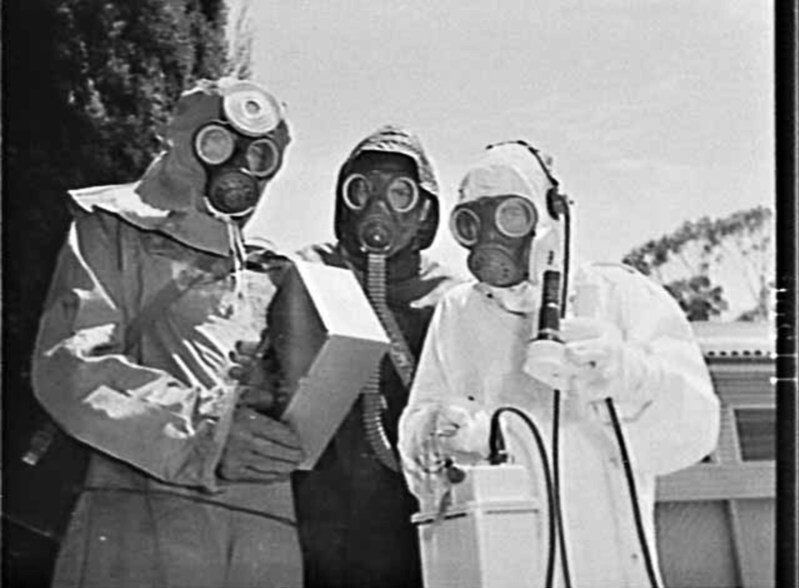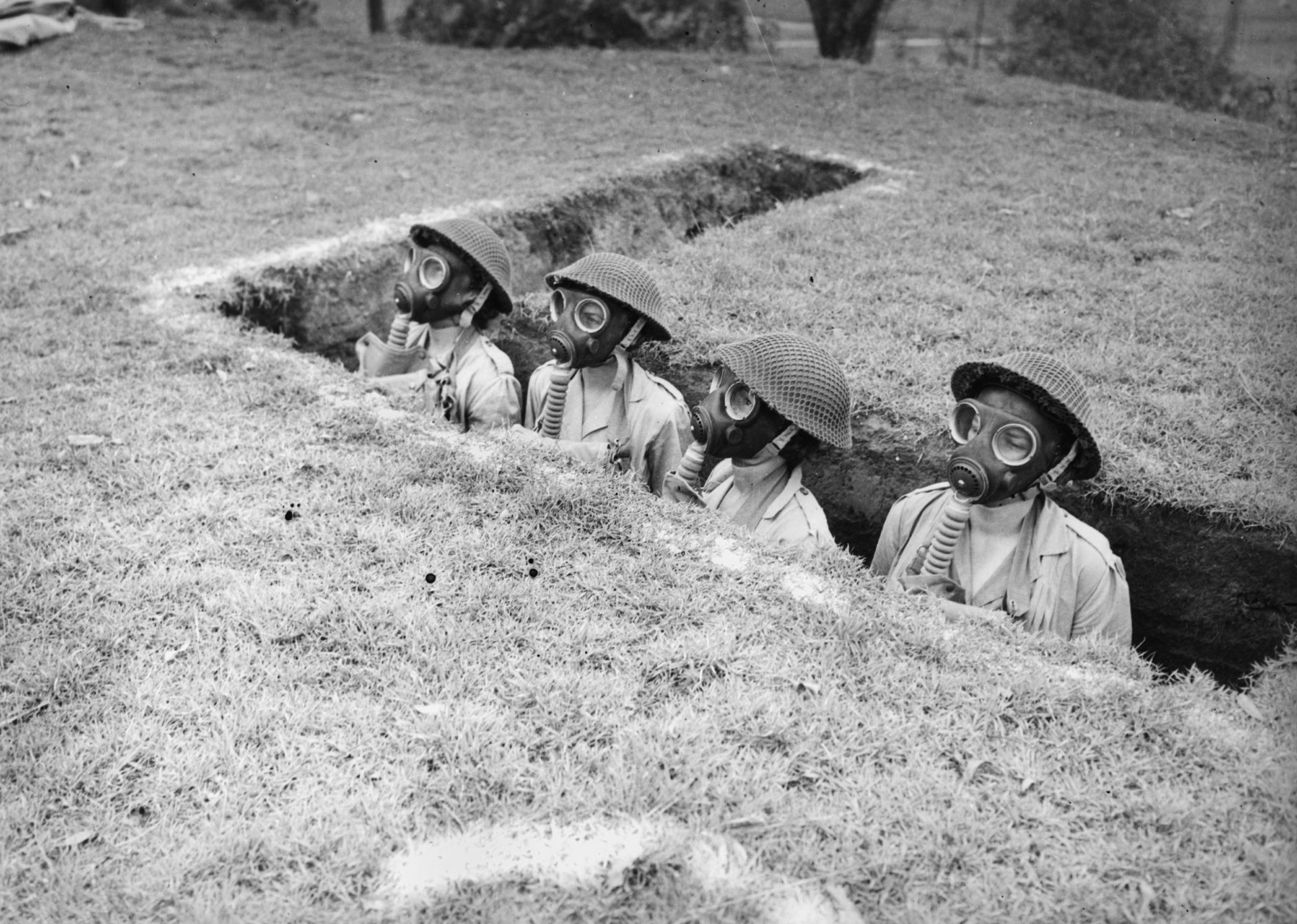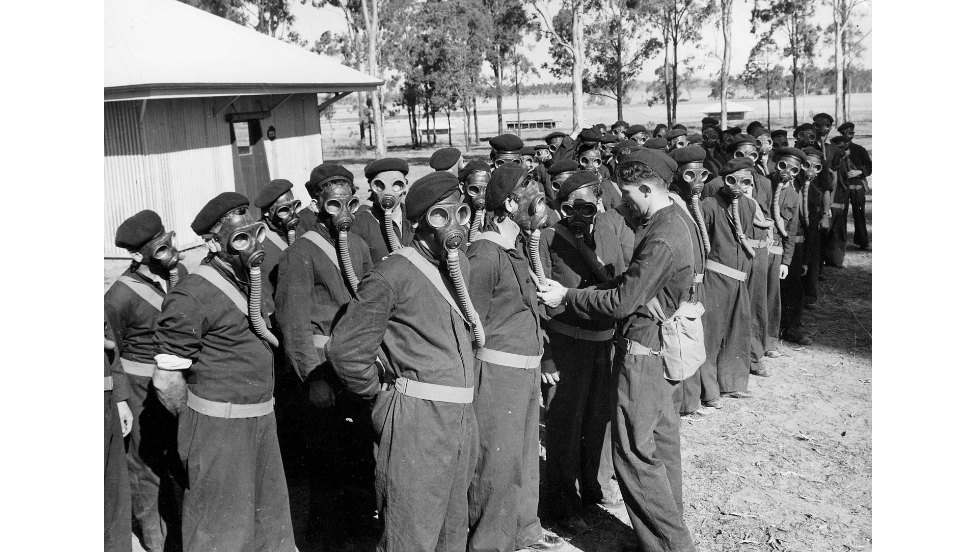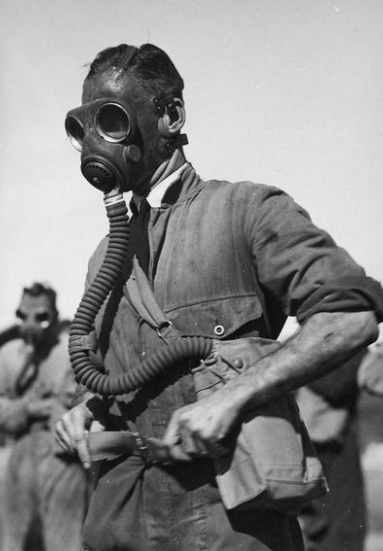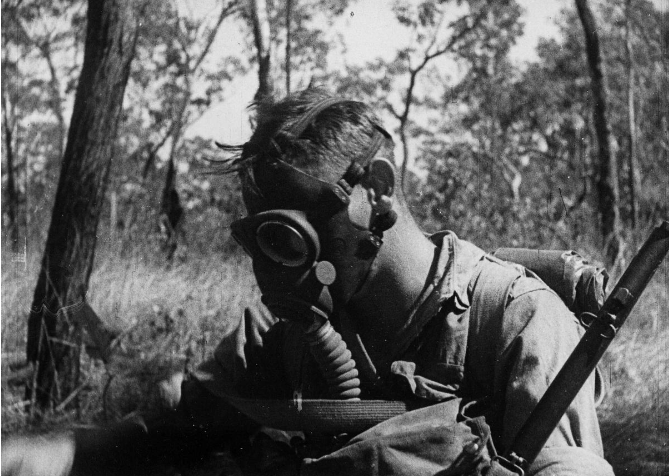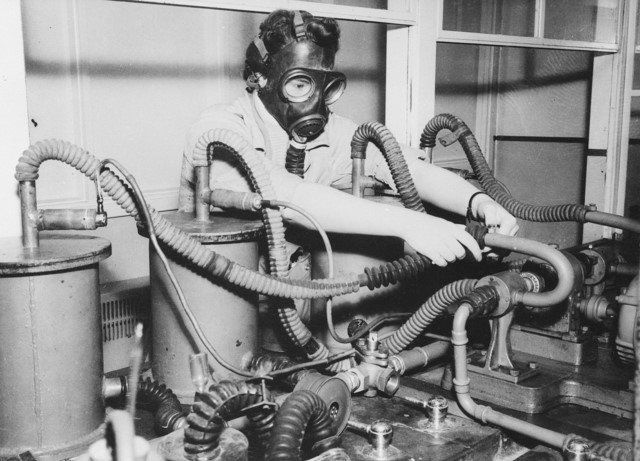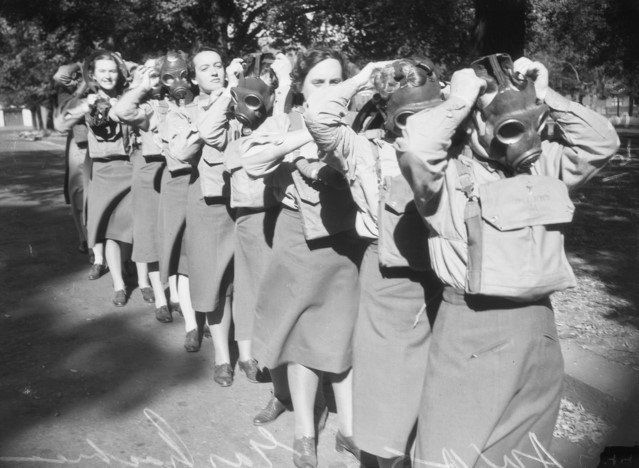Mk.V General Service Respirator
As the Second World War progressed, the Commonwealth realised how expensive the Mk.IV General Service Respirator was to produce, and thus, created the Mk.V General Service Respirator.
The Mk.V GSR was similar in many ways to the Mk.IV GSR, with the most obvious difference between the the two masks being the lack of stockinette on the facepiece of the mask
Additionally, all Mk.V GSR featured a microphone port to allow the user to use telephones and radios, which is something that only specialised radio operator variants of the Mk.IV GSR possessed.
The Mk.V was never intended to fully replace the Mk.IV, so it was often seen in service alongside Mk.IVs
The facepiece for the Mk.V would be produced by a few different rubber companies, such as Kenworth, Spalding, and Olympic Tire and Rubber Co. The manufacturers stamp (Which shows who made the mask, as well as when it was made) can be observed right next to the microphone port. The mask would then go onto be assembled at Munitions Supplies Laboratories Maribyrnong, which also assembled Australian Light Anti-Gas Respirators, Civilian Duty Respirators, and the Mk.IV GSR.
Three different hoses would be used with the Mk.V, the most popular being the same stockinette covered hose from the Mk.IV, with an extended hose (Which, when in use, will give the mask the Mk.VA designation) also being utilised with the mask in certain situations. Lastly, a plain rubber hose was also used with the Mk.V.
The Mk.V first saw use in Australia in 1942, which is the year all of the masks were manufactured, and would be used until at least the 1960s at the earliest.
The mask that succeeded the Mk.V GSR was the Australian Light Anti-Gas Respirator and the US M17




